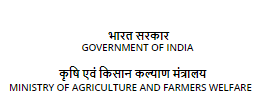Sensor Based Automatic Aeration System for Aquaculture
Background:
The aquaculture being the fastest growing food production system, a shift from extensive to
intensive farming practices is imperative to address the challenges of rising population, food
demand, and declining land resources. The intensive aquaculture system with high stocking,
feeding, etc. faces several problems like dissolved oxygen deficiency, increased carbon
dioxide level, production of ammonia-nitrogen, nitrate-nitrogen, organic pollution, etc.
However, the major threat in intensive aquaculture systems is the oxygen depletion in water,
a limiting factor in the intensive aquaculture systems. Maintenance of optimum level of
dissolved oxygen (DO) is the most essential requisite for proper fish growth, food conversion
ratio, and feeding efficiency. Aerators provide a prompt solution for oxygen deficiency and
water quality management in aquaculture system. The aerators are mechanical devices used
to enhance dissolved oxygen (DO) concentration in water either by direct injection of
air/oxygen or by bringing water in intimate contact with air for the purpose of diffusion of
atmospheric oxygen into the water. The use of aerator ensures better survival, higher
production, and disease-free environment by removing the system's toxic components.
Though the use of aerators is prevalent in aquaculture, the cost entailed in operation is often
excluded. The aerator cost is the third recurring largest cost in an intensive aquaculture
system after seed and feed cost accounting for about 15% of the total production cost. Hence,
to maximize the profit from culture operation, selection of suitable aerator, the time period
of operation, etc. are very important.
Presently, in most of the intensive aquaculture systems, aqua-culturists normally run the
aerators round the clock without looking at dissolved oxygen (DO) levels in water. It is
imperative that aerators should be run only when DO levels in culture water falls below the
required level. This proposes the need for proper dissolved oxygen (DO) management and
related cost in aquaculture. A sensor-based aeration system with control capabilities and
remote alarm continuously monitors the system's DO requirement and thereby providing
aeration as per requirement of culture water. This helps in reducing the production cost and
thereby maximizes the profit. These aerators are equipped with automatic sensors that
detect the fall in DO level below the optimum level (i.e. <5 ppm) and initiate action. The
automatic monitoring and control in sensor-based aerator system are significant in
minimizing energy cost and maximizing the yield and profit ensuring better system
management.:
Technology Details:
Sensor-based automatic aeration system consists of dissolved oxygen sensing probe, sensor,
control unit, power supply unit, and an aerator. The DO probe is immersed in culture media
of aquaculture system like pond, tank etc. The probe produces accurate DO readings even
with organic buildup on the sensor. The controller has a built-in data logger that collects
measurements at user selectable intervals (1 to 30 minutes).
The probe plug into controlling unit which continuously reads the DO values. In turn, the
controlling unit sends signal to signal receiving unit as shown in the figure. The signals
receiving unit is connected to power supply unit that supplies power to aerator so that the
aerator starts functioning.
When DO reading falls below the optimum value (say 5 mg/L), the control unit senses the
oxygen depletion and sends signal to signal-receiving unit which in turn enables power supply
unit to supply power to the aerator. Upon receiving the power supply, the aerator starts
supplying oxygen into water. When dissolved oxygen level rises above the optimum value,
the controlling unit senses the same and sends signals so that aerator stops functioning.
Thus, the aeration system functions automatically in accordance with fluctuations (above or
below the optimum value) in dissolved oxygen concentration in the culture media of the
aquaculture system.


